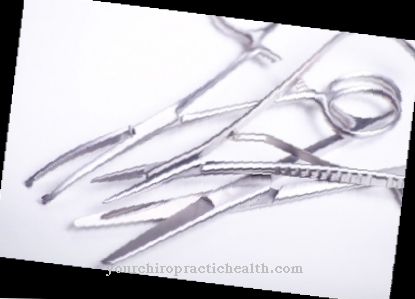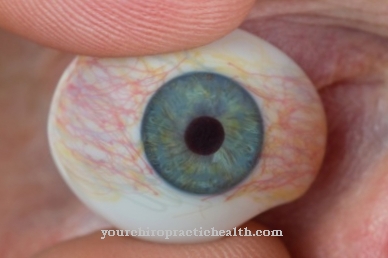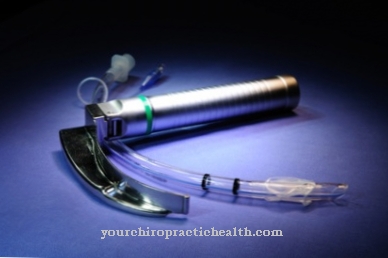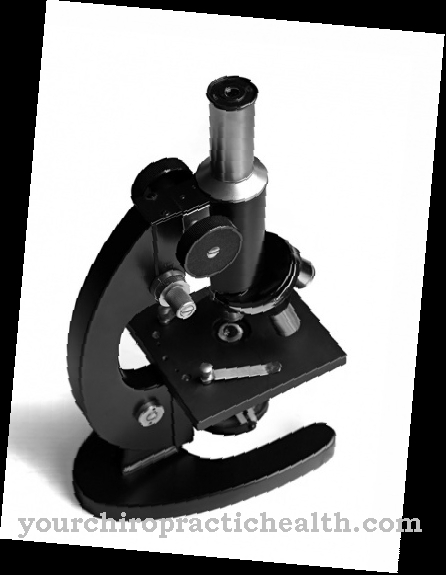In medicine there are different types of so-called Occlusion foils for use. The ophthalmologist uses occlusion foils, for example, to treat double vision and for the dentist they are diagnostic instruments. The ophthalmic occlusion film is a pleasant and gentle alternative to conventional eye patches.
What is the occlusion foil?

Occlusion foils are used in dentistry for diagnostic purposes and in this context are used to diagnose non-occlusion or occlusion. The dentist understands non-occlusion as a lack of contact between the rows of teeth in the lower and upper jaw, which is pathological. Deviations from the physiological occlusion points are also known as tooth misalignments or malocclusions and can not only be diagnosed with the help of the occlusion film, but also assessed in terms of their extent and then specifically treated.
A distinction must be made between the occlusion film, as it is used in ophthalmology. In this medical field, the term refers to a therapeutic agent instead of a diagnostic instrument, which is also referred to as a banger film. Occlusions are performed with the foil in connection with diseases of the eye. This means that the foils are used to specifically cover an eye.
Shapes, types & types
Dental occlusion foils differ fundamentally from ophthalmic occlusion foils. In ophthalmology, the thin foils with dimensions of around 4 by 5 centimeters are available. These covers have different degrees of transparency. The full light transmission, as it would exist without the film, is given in this context with a value of one. Occlusion foils have a value between 0.1 and 0.8.
Depending on the reason for an occlusion, the degree of transparency can vary significantly. The foils are often available for children with printed motifs. Adults usually choose an inconspicuous design.
The occlusion foils in dentistry, on the other hand, are 12 µm thick foil pieces in different colors that are required for checking and visualizing the dynamic occlusion.
Structure & functionality
Ophthalmological occlusion foils are self-adhesive. This means that they stay out of themselves on glasses and can simply be glued onto the glasses for the purpose of occlusion. This makes them an alternative to conventional eye patches.
As a rule, the foils are made of lightweight materials and, because they are attached to the glasses, are much more comfortable to wear than the plaster. The skin does not come into contact with the film or only to a lesser extent. Therefore, with these means of therapy, irritation of the skin, as often occurs with conventional eye patches, is virtually impossible.
The dental occlusion foils are thin colored ribbons. They are also called Articulation foils referred to, with the articulation in occlusion is meant the displacement of the two rows of teeth against each other, as it occurs through sliding movements through the lower jaw.
With the foils, both the contact points and the sliding movements of the rows of teeth can be visualized and thus checked. As a rule, the patient is encouraged to chew and to close the jaw, the film being placed between his lower and upper jaw.
The different colors of the foils help to reproduce the patterns of the chewing and closing movements on the surfaces of the occlusion. If disruptive contacts or disruptive slideways are found between the two jaw surfaces, the dentist grinds these areas at the areas colored in contact with the film, so that a balance is created in the articulation.
You can find your medication here
➔ Toothache medicationMedical & health benefits
The health benefits are given for both the ophthalmologic and the dental occlusion foils. Thanks to the foils, the ophthalmologist can accurately diagnose articulation problems and correct them directly.
Occlusion foils are successfully used by ophthalmologists to treat various eye diseases. With some eye muscle paralysis, for example, double vision occurs. With an occlusion film, the patient is freed from these double images and his healthy eye is less stressed. In addition, with the liberation from the double vision, his quality of life increases.
The same goal could be achieved with an eye patch. However, the main advantage of the occlusion film compared to a plaster is that it is discretion. The foils are inconspicuous and therefore usually more comfortable for the wearer. In addition to double vision, slight amblyopia with central fixation can also indicate therapy with occlusion foils.
They can also be an option for the follow-up treatment of such eye diseases.If, for example, a plaster occlusion was primarily used, which has already shown initial success, the foils may be used to perform a tapering occlusion. In this context, the degree of light transmission of the films is relevant. This is especially true for foils on the glass of the guide eye. The more successes are shown in the course of the treatment of the phenomenon, the more light permeability is chosen for the foils on the guide eye.
Another possibility is to gradually shorten the coverage intervals on the visually impaired guide eye. Both therapy approaches have delivered convincing successes in the past. The exact procedure during the treatment depends on the individual successes and goals.




























